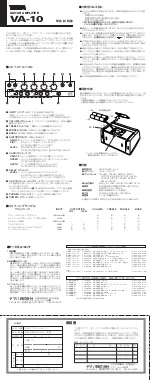
NV1023 SDIF-2 Distribution Amplifier 9
to output BNC J3.
4.3 POWER
Refer to Schematic Diagram EM0103, page 3.
Pre-regulated power from the frame (+17 VDC) enters the module via
connector J2. Capacitors C18, C19 and inductor L2 filter the +17 VDC
power. Monolithic voltage regulator IC U4 provides reg5 VDC
for the active components on the NV1023 module. Schottky diode D1
catches the flyback voltage developed across the choke L2 when the
pass transistor in the switching regulator turns off. Capacitor C21 filters
residual noise on the +5 VDC to acceptable levels.
5. MAINTENANCE AND TROUBLESHOOTING
CAUTION: THE FOLLOWING PROCEDURES SHOULD BE
PERFORMED BY QUALIFIED SERVICE PERSONNEL
ONLY.
The NV1023 requires no electrical maintenance, although it is wise to
check periodically to ensure that the NV1000 equipment frame is
properly ventilated for cooling and that any optional fan assemblies are
free of dirt and obstructions.
Should an electrical problem arise, the following steps will help isolate
or eliminate it.
1. Assure normal NV1000 system power distribution as follows:
a. Observe the green LED on the PS2001 power supply module.
If illuminated, the line side of the supply connection is in order.
If it is not illuminated, ensure that the line cord is connected,
that the power-entry module fuse on the frame is intact, and
that the line voltage is correctly selected on the PS 2001 power
supply.
b. Confirm that the voltages at the test points on the front of the
PS2001 power supply match the values shown in Table 3 -
Acceptable Test Point Voltages for PS2001 Power Supplies. If
not, remove the active modules one at a time. If the removal of
one of the modules causes a restoration of the nominal supply
voltage, return that module to NVISION for repair. If removal
of all of the cards fails to restore the supply voltage, it is likely
that the power supply itself is at fault and should be replaced.
2. To determine if the NV1023 or the external equipment is at fault:
a. Where possible, replace the NV1023 with a known-good
module. If the fault remains, check the source equipment to
ensure a good signal is present at its output. Check all signal






























